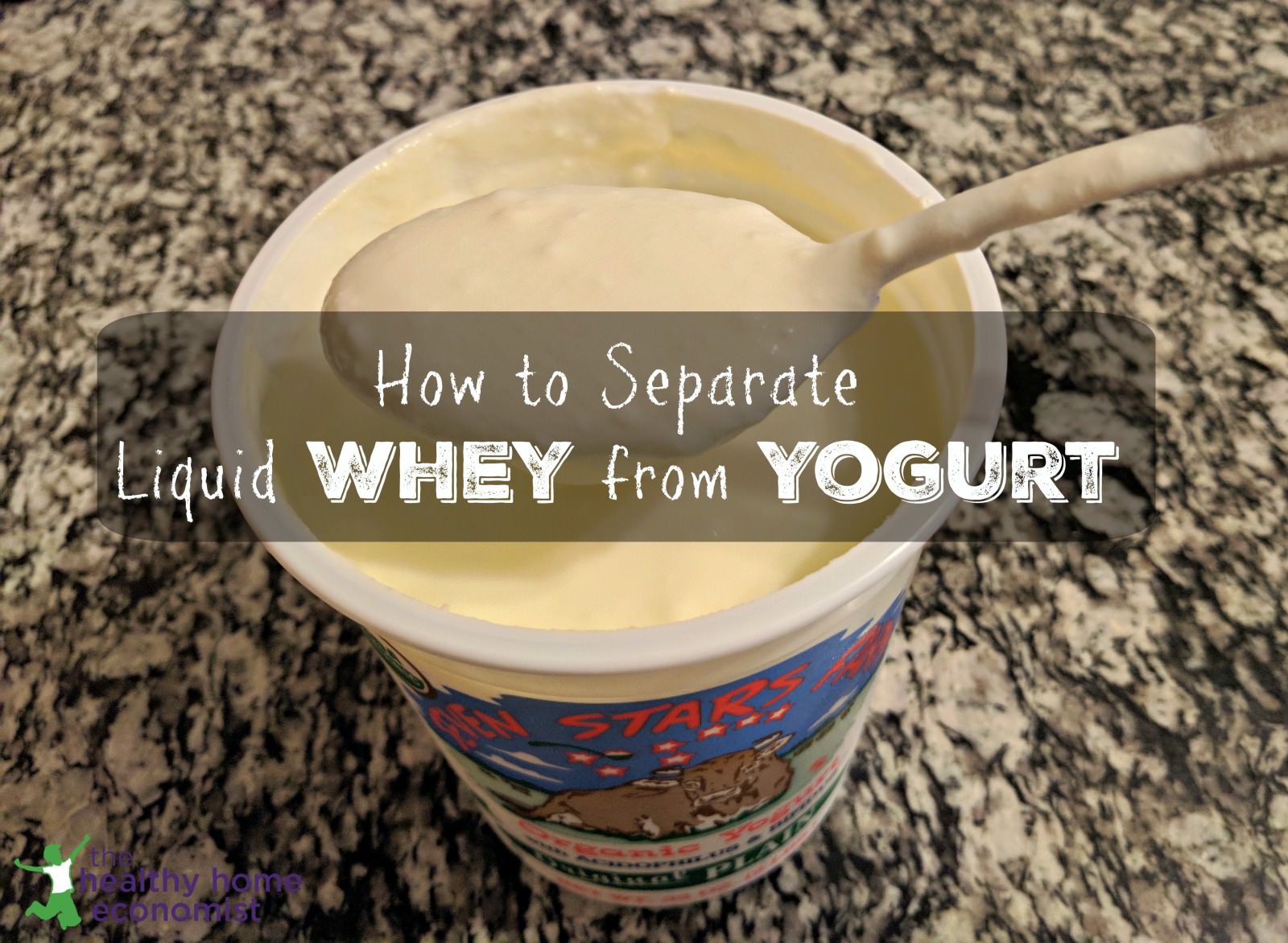Table of Contents[Hide][Show]
 Whey in its liquid and whole food form is the ideal starter for probiotic-rich, health-enhancing fermented foods and drinks.
Whey in its liquid and whole food form is the ideal starter for probiotic-rich, health-enhancing fermented foods and drinks.
Liquid whey is most easily and economically obtained from soured raw milk also called clabbered milk.
Clabbered milk is a very useful item for the traditionally minded cook and has the consistency and taste of drinkable style yogurt.
Unfortunately, not everyone has access to raw milk which may seem to preclude the use of unprocessed, liquid whey for fermentation purposes as it is not commercially available.
The good news is that you can easily extract whey from plain yogurt from the store. Using homemade yogurt is even better. You may use Greek yogurt too although you won’t get as much whey from the effort. This is due to the nutritional differences of Greek yogurt vs regular yogurt.
Powdered Whey No Substitute for the Real Thing
Please note that powdered whey is never an adequate substitute for whole, unprocessed, liquid whey. To gain the benefits of whey, it must be gently separated from a fermented dairy product like clabbered milk, kefir, or yogurt.
Drying and powderizing whey even at low temperatures denature the delicate proteins. It also eliminates the beneficial probiotic and enzymatic properties.
Uses for Liquid Whey
Liquid whey is an important ingredient in homemade baby formula recipes. In addition, it is indispensable as an inoculant for fermented foods and drinks. Unprocessed liquid whey is also wonderful to mix with filtered water and a little orange juice for a healthy sports drink naturally loaded with electrolytes.
How to Separate Whey from Yogurt (or Kefir)
The easy recipe below will result in a jar of beautiful raw whey within minutes! You won’t believe how easy it is! I recommend that you do not use Greek yogurt, as it contains significantly less whey than regular yogurt.
I also recommend that you stick with quality yogurt brands as there is quite a bit of variation within the industry.

How to Separate Whey from Yogurt
Simple how-to for separating whey from yogurt or kefir. Homemade or store bought brands may be used including whole, lowfat, and no fat versions. Whole yogurt is recommended, however.
Ingredients
- 1 quart plain yogurt kefir may be substituted
- 1 large glass bowl
- 1 fine mesh cheese cloth
- 1 large rubber band
Instructions
-
Line bowl with cheesecloth. Spoon in the container of yogurt.
-
Gather up the ends of the cheesecloth and secure with the rubber band. Attach the rubber band to a knob on one of your upper kitchen cabinets. Keep the bowl beneath to catch the dripping whey.
-
Leave dripping on the counter for about 1 hour.
-
Remove drip bag from the kitchen knob and place in a clean bowl. Unfasten the rubber band and scrape out the yogurt cheese within the cheesecloth into a container. Seal the lid and refrigerate.
-
Pour the liquid whey in the first bowl into a glass mason jar and secure the lid. Refrigerate. It will stay fresh for several months.
Separating Whey from Yogurt (Video Tutorial)
In the video below, I show you the very easy process for obtaining whey in its liquid, whole food form from a quart of plain yogurt. I also discuss what to do with the leftover yogurt cheese once the whey has been extracted. Hint: it makes a delicious stuffing for large pasta shells or lasagna.
Note that you can use kefir in place of yogurt if desired. Use the exact same process shown in the video. Kefir is healthier than yogurt too, containing far more beneficial probiotics. Unfortunately, it is harder to find quality brands commercially, but fortunately, kefir is easier to make at home than yogurt if that’s what you’d really prefer to use.
If using yogurt, you are going to want to source the best quality your budget can afford. Ideally, this is grass-fed organic whole yogurt. But, in a pinch, you can use no fat or low-fat yogurt from supermarket brands like Dannon.
Cloudy or clear liquid whey will last in a glass mason jar in the refrigerator for about six months. Note, however, that the flavor will grow stronger and more pungent over time.








Hmm…it was pointed toward your right shoulder and cut off your left arm. Strange – I’ll try to watch it on another device. Thanks.
I have strained my organic grass fed yogurt for a long time. I love the richness of the end product. I use the whey for the liquid in my Einkorn flour bread.
The video was pointed more at the wall and I couldn’t see your left hand ot anything on the left side.
Alright! I wanted to make your beet kavas but did not know where to get liquid whey. Kept glancing around in markets looking for it. Thanks for posting.. I feel complete!
After milk has clabbered and you strain off the whey, what do you do with the solids left over? Isn’t it interesting that spell check doesn’t recognize “clabbered”?
Hi Sarah, nobody asked this but I was wondering if the whey you initially get is whitish and then it turns greenish. I see in your bowl that it looks a bit white but in the small Mason it looks more clear and greenish. I’m making it right now but my whey looks more white than green. Thanks!!!
Making orangina a la Sarah after I make the whey. Thanks for what you’re doing.
Kamila from Northern Virginia
Wow I didn’t know you could do this with yogurt bought at the store. I’m curious to try it now, I actually have some in the fridge. Is there a rough estimate for how long it’ll stay fresh?
I actually accidentally discovered this a few weeks ago. I wanted to transition from conventional yogurt to grass-fed, organic yogurt, but I really love the texture of Greek yogurt. I bought a Greek-yogurt strainer from Amazon, set about straining 2 quarts of yogurt, and ended up with a perfect consistency of yogurt, and an awesome amount of whey to boot! I saved the whey this time around (I do this every week, so I end up with a lot of whey), and made some mayonnaise yesterday, with plans for other fermented foods to follow. If you enjoy the consistency of Greek yogurt, and want an easy way to get some whey, I would totally suggest going this route.
Thank you for this. I made whey as you’ve described from raw milk but my whey isn’t as clear there still seems to be a layer of milk at the top. This was over a month ago. Would it still be good to use. Thank you.
I’m guessing this is from unpasteurized yogurt, right?